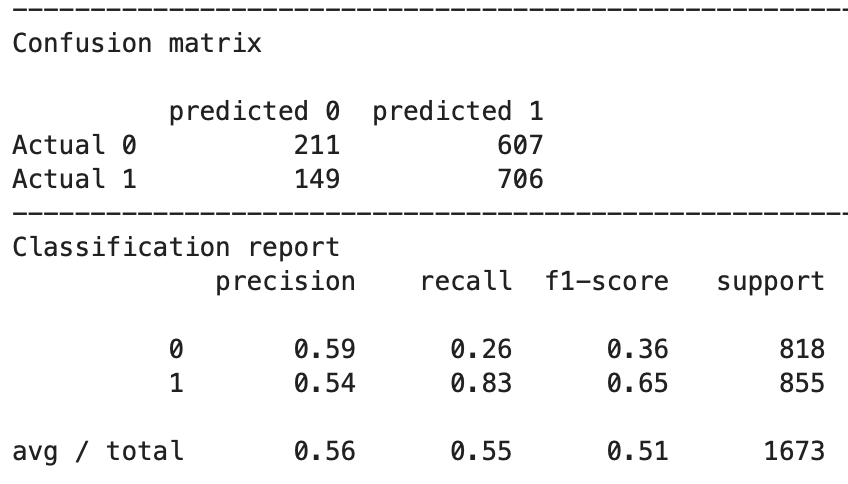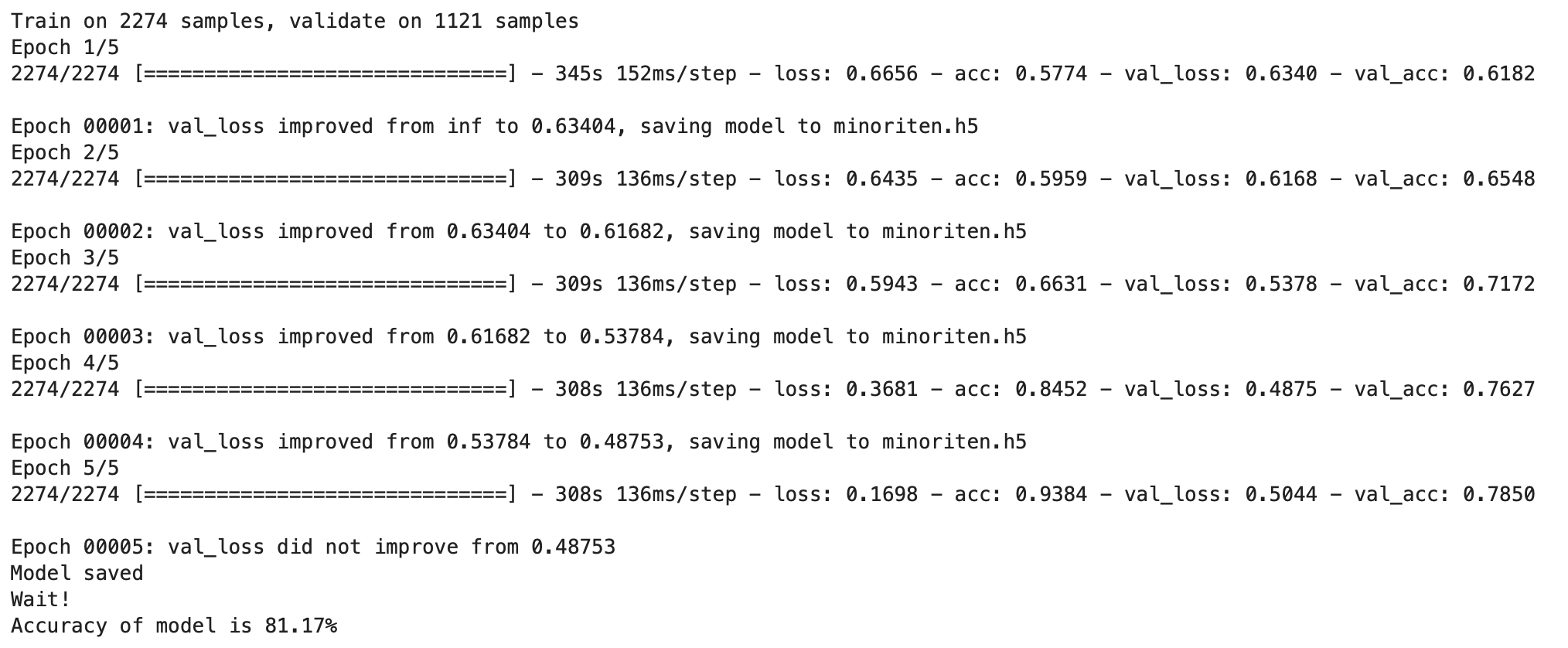45 sentiment analysis without labels
Sentiment Analysis with VADER- Label the Unlabelled Data VADER is a lexicon and rule-based sentiment analysis tool. It is used to analyze the sentiment of a text. Lexicon is a list of lexical features (words) that are labeled with positive or negative... Getting Started with Sentiment Analysis using Python There are more than 215 sentiment analysis models publicly available on the Hub and integrating them with Python just takes 5 lines of code: pip install -q transformers from transformers import pipeline sentiment_pipeline = pipeline ("sentiment-analysis") data = ["I love you", "I hate you"] sentiment_pipeline (data)
Sentiment Analysis for AI by LabelMe Sentiment analysis is needed to improve moderation algorithms, learning users' attitudes towards different topics, social mood index, and study the portrait of the target audience. LabelMe has extensive experience in parsing and marking the sentiment of texts from a variety of platforms: VKontakte, YouTube, Instagram, Twitter, IQBuzz, Facebook.

Sentiment analysis without labels
Sentiment Analysis: What is it and how does it work? - Awario Sentiment analysis is an important part of monitoring your brand and assessing brand health.In your social media monitoring dashboard, keep an eye on the ratio of positive and negative mentions within the conversations about your brand and look into the key themes within both positive and negative feedback to learn what your customers tend to praise and complain about the most. Top 10 best free and paid sentiment analysis tools - Awario It allows you to develop your own sentiment analysis models and even checks this model for accuracy once you tag enough texts to verify data. Pricing You can use the basic version of the tool for free. The paid version starts at $299 a month. 7. Clarabridge Best for: customer support, customer feedback analysis. How to label review having both positive and negative sentiment words I have used vader library for labeling of amazon's reviews but it doesn't handle these types of reviews "No problems with it and does job well. Using it for Apple TV and works great. I would buy again no problem". This is positive sentence but the code label it as negative. How can I handle these types of reviews.
Sentiment analysis without labels. Sentiment Analysis using Python [with source code] Steps to build Sentiment Analysis Text Classifier in Python 1. Data Preprocessing As we are dealing with the text data, we need to preprocess it using word embeddings. Let's see what our data looks like. import pandas as pd df = pd.read_csv("./DesktopDataFlair/Sentiment-Analysis/Tweets.csv") We only need the text and sentiment column. Sentiment Analysis: Distinguish Positive and Negative Documents Sentiment Analysis is the task of detecting the tonality of a text. A typical setting aims to categorize a text as positive, negative, or neutral. For instance, the text "This is a nice day" is obviously positive, while "I don't like this movie" is negative. Some texts can contain both positive and negative statements at the same time. Evaluating Unsupervised Sentiment Analysis Tools Using Labeled Data Sentiment analysis also exists in unsupervised learning, where tools/libraries are used to classify opinions with no cheatsheet, or already labeled output. This makes it somewhat hard to evaluate these tools, as there aren't any pre-prepared answers. Therefore, deciding what tool or model to use to analyze the sentiment of unlabeled text data ... Sentiment Analysis: The What & How in 2022 - Qualtrics Machine learning-based sentiment analysis A computer model is given a training set of natural language feedback, manually tagged with sentiment labels. It learns which words and phrases have a positive sentiment or a negative sentiment. Once trained, it can then be used on new data sets.
Tutorial: Fine-tuning BERT for Sentiment Analysis - by Skim AI This will return logits. logits = model (b_input_ids, b_attn_mask) # Compute loss and accumulate the loss values loss = loss_fn (logits, b_labels) batch_loss += loss. item total_loss += loss. item # Perform a backward pass to calculate gradients loss. backward # Clip the norm of the gradients to 1.0 to prevent "exploding gradients" torch. nn. utils. clip_grad_norm_ (model. parameters (), 1.0) # Update parameters and the learning rate optimizer. step scheduler. step # Print the loss values ... Sentiment Analysis in Python: TextBlob vs Vader Sentiment vs Flair vs ... Sentiment analysis is the task of determining the emotional value of a given expression in natural language. It is essentially a multiclass text classification text where the given input text is classified into positive, neutral, or negative sentiment. The number of classes can vary according to the nature of the training dataset. How to label text for sentiment analysis — good practices If you are working on sentiment analysis problems, be careful about text labelling. If you have never labelled text in your life, this is a good exercise to do. If you only rely on clean/processed text to learn, you can face a problem where the problem is not your model, but the information that you are using to train it. Is it possible to do Sentiment Analysis on unlabeled data ... - Medium 1) Use the convert_label () function to change the labels from the "positive/negative" string to "1/0" integers. It is a necessary step for feeding the labels to a model. 2) Split the data into...
How to Do Twitter Sentiment Analysis Without Breaking a Sweat? Sentiment Analysis (also known as Emotion AI) is the process of measuring the tone of writing and evaluating whether it is positive, neutral, or negative. Sentiment analysis is based on solutions developed in the field of natural language processing (NLP). Top 13 Sentiment Analysis Software in 2022 - Reviews, Features, Pricing ... Sentiment Analysis Software can help in labeling the signals of potential customers or clients. It can be used as a predictive method of generating sales leads for companies.Sentiment Analysis is done based on the data collection, interpretation and the classification of the collected data. ... integrate it without coding through our plug-ins ... Is it possible to do sentiment analysis of unlabelled text using ... Essentially, no - you can't perform sentiment analysis without some labeled data. Without labels, of some sort, you have no way of evaluating whether you're getting anything right. So, you could just use this sentiment-analysis function: get_sentiment(text): return random.choice(['positive', 'negative']) Woohoo! How to Succeed in Multilingual Sentiment Analysis without ... - Medium You can follow the proposed process of sentiment analysis in the figure below. First, we preprocess our texts in a foreign language (remove urls, emojis, digits and punctuation marks) and translate...
Free Online Sentiment Analysis Tool - MonkeyLearn Sentiment analysis benefits: 👍. Quickly detect negative comments & respond instantly. 👍. Improve response times to urgent queries by 65%. 👍. Take on 20% higher data volume. 👍. Monitor sentiment about your brand, product, or service in real time.
Top 12 Free Sentiment Analysis Datasets | Classified & Labeled Finding The Right Sentiment Analysis API. Repustate's sentiment analysis platform has been trained on sentiment analysis datasets in multiple industries. The engine processes millions of reviews per day for hundreds of clients across the globe. It enables real-time social media sentiment analysis and does so in 23 languages, natively. It provides topic-driven and aspect-based sentiment analysis and has a processing speed is 1,000 reviews per second.
rafaljanwojcik/Unsupervised-Sentiment-Analysis - GitHub Unsupervised-Sentiment-Analysis. How to extract sentiment from the data without any labels. Repo for towardsdatascience article: about Unsupervised Sentiment Analysis on Polish Sentiment Dataset. Analyzed dataset comes from wonderful article by Szymon Płotka: .

How does Sentiment Analysis work for B2B VARs? How can you use Sentiment Analysis? - VAR Sales ...
How to perform sentiment analysis and opinion mining - Azure Cognitive ... Sentiment Analysis applies sentiment labels to text, which are returned at a sentence and document level, with a confidence score for each. The labels are positive, negative, and neutral. At the document level, the mixed sentiment label also can be returned. The sentiment of the document is determined below: Confidence scores range from 1 to 0.
How to label sentiment using NLP? - Data Science Stack Exchange Simplest Approach - Use textblob to find polarity and add the polarity of all sentences. If the overall polarity of tweet is greater than 0 , then it's positive and if less than zero , you can label it as negative
How to label huge Twitter data set for training a sentiment analysis ... Performing sentiment analysis on Twitter data involves five steps: Gather relevant Twitter data Clean your data using pre-processing techniques Create a sentiment analysis machine learning model Analyze your Twitter data using your sentiment analysis model Visualize the results of your Twitter sentiment analysis Prepare Your Data
15 of The Best Sentiment Analysis Tools - MonkeyLearn Blog The best sentiment analysis software and tools in 2022. MonkeyLearn. Lexalytics. BrandWatch. Social Searcher. MeaningCloud. Discover more.
Where can I find datasets for sentiment analysis which don't ... - Quora Create a list of emoticons having positive sentiment and another list for negative sentiments. Then if a tweet contains only (or mostly) emoticons of positive sentiment then label it as positive tweet and vice verse for negative label. It is not necessary that you can label all the tweets in this way as every tweet does not contain emoticons.
Unsupervised Sentiment Analysis. How to extract sentiment from the data ... O ne of the common applications of NLP methods is sentiment analysis, where you try to extract from the data information about the emotions of the writer. Mainly, at least at the beginning, you would try to distinguish between positive and negative sentiment, eventually also neutral, or even retrieve score associated with a given opinion based only on text.
Sentiment Analysis: First Steps With Python's NLTK Library Sentiment analysis is the practice of using algorithms to classify various samples of related text into overall positive and negative categories. With NLTK, you can employ these algorithms through powerful built-in machine learning operations to obtain insights from linguistic data. Remove ads Installing and Importing
How to label review having both positive and negative sentiment words I have used vader library for labeling of amazon's reviews but it doesn't handle these types of reviews "No problems with it and does job well. Using it for Apple TV and works great. I would buy again no problem". This is positive sentence but the code label it as negative. How can I handle these types of reviews.
Top 10 best free and paid sentiment analysis tools - Awario It allows you to develop your own sentiment analysis models and even checks this model for accuracy once you tag enough texts to verify data. Pricing You can use the basic version of the tool for free. The paid version starts at $299 a month. 7. Clarabridge Best for: customer support, customer feedback analysis.
Sentiment Analysis: What is it and how does it work? - Awario Sentiment analysis is an important part of monitoring your brand and assessing brand health.In your social media monitoring dashboard, keep an eye on the ratio of positive and negative mentions within the conversations about your brand and look into the key themes within both positive and negative feedback to learn what your customers tend to praise and complain about the most.
















Post a Comment for "45 sentiment analysis without labels"